| Description | Participants | Summaries | Products |
|---|
Archived NIMBioS Working Group
Nonautonomous Systems and Terrestrial Carbon Cycle
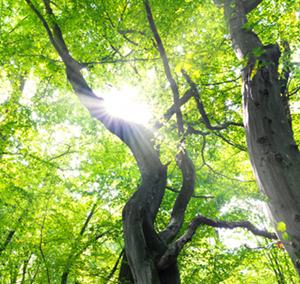
Topic: Nonautonomous linear system of the terrestrial carbon cycle: Mathematical and ecological properties and their uses in guiding carbon research
Meeting dates: May 13-17, 2013; March 17-21, 2014; November 17-21, 2014; July 27-31, 2015
Organizers:
Yiqi Luo, Microbiology and Plant Biology, Univ. of Oklahoma, Norman, OK
Maria Leite, Mathematics and Statistics, The Univ. of Toledo, Toledo, OH
Ying Wang, Mathematics, Univ. of Oklahoma, Norman, OK
Objectives:
Modern civilization of humanity is largely driven by uses of fossil fuel energy. Fossil fuel burning releases carbon dioxide (CO2) into the atmosphere, which, as one major greenhouse gas, likely causes global warming. The latter, in turn, poses a great threat to the human civilization. To sustain humanity into future generations, great research investment has been made to study carbon cycles in biosphere, atmosphere, and lithosphere. Carbon cycle research has been primarily done by uses of observation through various networks, field and laboratory experiments, and simulation models. Although carbon cycle processes have been described by mathematical equations in Earth system models to quantitatively evaluate their responses and feedback to climate change, much less has been done on mathematical analysis to gain theoretical insights into carbon cycle. Recent research that examined numerous lines of empirical evidence has shown that the terrestrial carbon cycle can be adequately described as a nonautonomous linear system. The linearity reflects the nature of the carbon cycle that carbon, once fixed by photosynthesis, is linearly transferred among pools within an ecosystem. The linear carbon transfer, however, is modified by nonlinear response functions to external forcing variables. In addition, photosynthetic carbon influx is also nonlinearly influenced by external variables. This working group will examine theoretical properties of the nonautonomous linear system of terrestrial carbon cycle and explore uses of those properties to guide observatory, experimental, and modeling research. This group also has the potential to make seminal contributions to establish theoretical ecosystem ecology as a subdiscipline in ecology.

Meeting Summaries
| Mtg # | Dates | Agenda | Summary | Photo | Evaluation |
|---|---|---|---|---|---|
| 1 | May 13-17, 2013 | Link | Link | Report | |
| 2 | Mar 17-21, 2014 | Link | |||
| 3 | Nov 17-21, 2014 | Link | |||
| 4 | Jul 27-31, 2015 | Link |
Meeting 1 Summary. During the first meeting, this Working Group worked toward promoting mutual understanding between mathematicians and ecologists, learned about the mathematical and ecological properties of the terrestrial carbon cycle, and further defined the research question that this group has decided to pursue in the coming months. Specifically, we will develop a 3-D parameter space to bound outputs of global model simulations of terrestrial carbon cycle responses to climate change. Previous analysis has suggested that model structures of global carbon cycle models are very similar. Widely divergent modeling results can be largely attributed to differences in parameters. Although each global model may have thousands of individual parameters, those numerous parameters can be summarized into three synthetic parameters: carbon influx, residence times, and relaxation (or lagging) time. The first two defines steady-state carbon pool sizes (i.e., invariant sets in a math term for a non-autonomous system), which vary as climate changes. The last synthetic parameter defines how fast the modeled carbon cycle can converge toward the invariant sets of steady-state carbon pool trajectory. The group will use two types of simple carbon cycle models: 1) Carbon cycle with a non-autonomous linear system with one-way flow, 3-pool soil model and 2) the nonlinear, non-autonomous, 4-pool soil model with microbial feedback, to define the 3-D parameter space. The 3-D parameter space, if it can be successfully developed, is expected to provide a framework to analyze uncertainty and traceability of terrestrial carbon cycle models, which is a theme the group wants to address in future meetings.
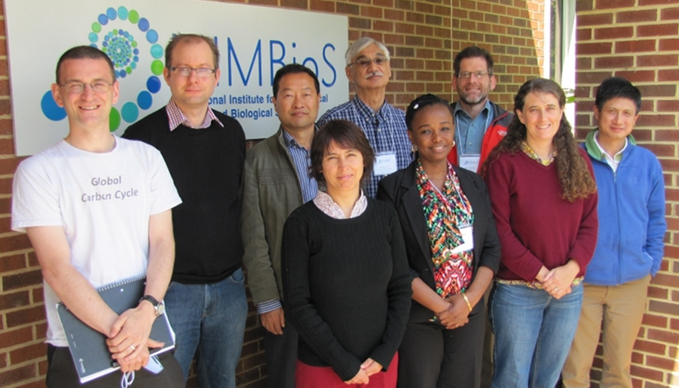 |
| Mtg. 1 participants (Back row, L to R): Matthew Smith, Martin Rasmussen, Yiqi Luo, Benito Chen, Forrest Hoffman; (Front row, L to R): Maria Leite, Folashade Agusto, Belinda Medlyn, Ying-Ping Wang |
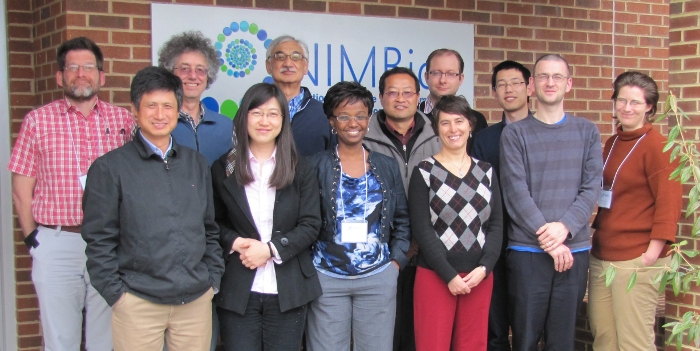 |
| Mtg. 2 participants: (Back row, L to R) Forrest Hoffman, Alan Hastings, Benito Chen, Yiqi Luo, Martin Rasmussen, Jiang Jiang; (Front row, L to R) Ying-Ping Wang, Ying Wang, Folashade Agusto, Maria Leite, Matthew Smith, Kathe Todd-Brown. |
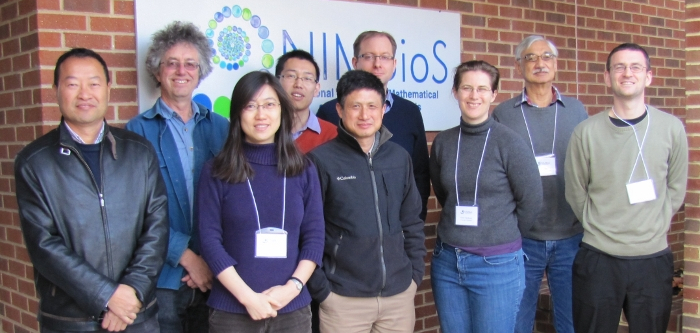 |
| Mtg. 3 participants (L to R): Yiqi Luo, Alan Hastings, Ying Wang, Jiang Jiang, Ying-Ping Wang, Martin Rasmussen, Kathe Todd-Brown, Benito Chen, Matthew Smith. |
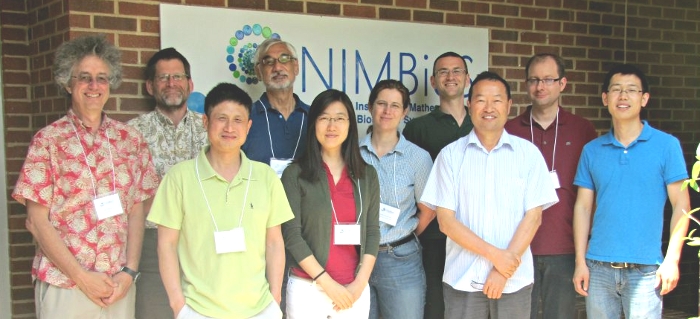 |
| Mtg. 4 participants (L to R): Alan Hastings, Forrest Hoffman, Ying-Ping Wang, Benito Chen, Ying Wang, Kathe Todd-Brown, Matthew Smith, Yiqi Luo, Martin Rasmussen, Jiang Jiang. |
NIMBioS Working Groups are chosen to focus on major scientific questions at the interface between biology and mathematics. NIMBioS is particularly interested in questions that integrate diverse fields, require synthesis at multiple scales, and/or make use of or require development of new mathematical/computational approaches. NIMBioS Working Groups are relatively small (up to 10 participants), focus on a well-defined topic, and have well-defined goals and metrics of success. Working Groups will meet up to 3 times over a two-year period, with each meeting lasting up to 2.5 days.
A goal of NIMBioS is to enhance the cadre of researchers capable of interdisciplinary efforts across mathematics and biology. As part of this goal, NIMBioS is committed to promoting diversity in all its activities. Diversity is considered in all its aspects, social and scientific, including gender, ethnicity, scientific field, career stage, geography and type of home institution. Questions regarding diversity issues should be directed to diversity@nimbios.org. You can read more about our Diversity Plan on our NIMBioS Policies web page. The NIMBioS building is fully handicapped accessible.
NIMBioS
1122 Volunteer Blvd., Suite 106
University of Tennessee
Knoxville,
TN 37996-3410
PH: (865) 974-9334
FAX: (865) 974-9461
Contact NIMBioS


